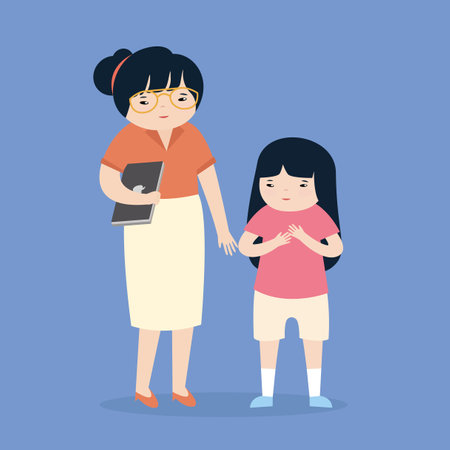Understanding Diversity and Inclusion in Early Childhood
When we talk about diversity and inclusion with toddlers, it’s important to use language that feels simple, genuine, and relatable. In the United States, where communities are made up of people from many backgrounds, teaching these values early lays the foundation for kindness and respect. Diversity means noticing and appreciating differences—like how some friends have curly hair, others have straight hair, or how families might speak different languages at home. Inclusion is making sure everyone feels welcome and has a place to belong, no matter what makes them unique. For American families, embracing these values helps kids grow up open-minded and prepared to connect with people from all walks of life. When toddlers learn that it’s great to be different and even better to share and play together, they start building empathy and understanding right from the very beginning.
Modeling Inclusive Behavior as a Caregiver
One of the most powerful ways to teach toddlers about diversity and inclusion is by being a daily role model. Young children are like little sponges—they soak up everything they see and hear, especially from their caregivers. When you consistently demonstrate acceptance, kindness, and empathy in your everyday actions, toddlers naturally observe and imitate these inclusive behaviors. This means that the way you interact with others, handle differences, and respond to new situations can set a lifelong foundation for your child’s attitude toward diversity.
It might be as simple as greeting neighbors from different backgrounds with genuine warmth or inviting friends with varying abilities to playdates. Toddlers notice when you listen respectfully to others’ opinions or show compassion to someone who is struggling. By seeing you value each person’s uniqueness, your child learns that everyone deserves respect and care—no matter what they look like or where they come from.
| Inclusive Behavior | How Toddlers Learn |
|---|---|
| Using kind words for everyone | Toddlers repeat positive language heard at home |
| Helping someone in need | Children mimic acts of empathy and support |
| Celebrating cultural traditions | Kiddos become curious and appreciative of diversity |
| Avoiding stereotypes in conversation | Kids learn not to judge based on appearances |
If you ever catch yourself making a mistake or missing an opportunity to be inclusive, don’t worry—toddlers also learn from how you handle those moments. A simple apology or a thoughtful explanation (“Oops! I forgot to ask if Sam wanted to join us. Let’s invite him now!”) shows your child that it’s okay to keep learning and growing together. Modeling this openness reinforces that inclusion is a journey, not just a lesson.

3. Creating Inclusive Environments at Home and in the Community
One of the most powerful ways to teach toddlers about diversity and inclusion is by making it a natural part of their everyday environment. When children see and experience diversity in their homes, play spaces, and communities, they begin to understand that differences are not only normal but also something to celebrate. Start by choosing books that feature characters from various backgrounds, ethnicities, and abilities. Storytime becomes an opportunity to talk about different cultures, family structures, and perspectives. Let your child ask questions and share your own experiences, making these conversations comfortable and ongoing.
Toys can also play a big role in shaping how toddlers see the world. Look for dolls, action figures, puzzles, and games that represent a range of skin tones, physical abilities, and cultural traditions. When children play with diverse toys, they learn that everyone has value and that being different is perfectly okay. It’s important to be intentional—seek out media and shows that highlight inclusivity and positive representation, such as cartoons with characters who use wheelchairs or families who speak different languages at home.
Beyond your own four walls, think about the places you visit as a family. Parks, libraries, museums, or community events can provide exposure to people from all walks of life. Attending multicultural festivals or story hours led by guest readers from diverse backgrounds helps reinforce the idea that our world is beautifully varied. These real-life experiences give toddlers practical context for what they read about or watch at home.
Ultimately, by weaving diversity into daily routines through books, toys, media, and community outings, we show our children that inclusion isn’t just a special lesson—it’s part of how we live every day. When kids grow up seeing difference as both ordinary and valuable, they’re more likely to become empathetic adults who embrace everyone for who they are.
4. Encouraging Curiosity and Open Conversations
Toddlers are naturally curious about the world around them, including the differences they notice in people’s appearances, languages, and customs. As parents and caregivers, it’s important to embrace this curiosity and use it as an opportunity to nurture empathy and understanding. When children ask questions—sometimes loudly or unexpectedly—about why someone looks or sounds different, our honest and gentle responses help set the tone for how they perceive diversity.
Instead of shushing or redirecting their questions, try responding with openness. For example, if your toddler asks why a friend has a different skin color, you might say, “People have all kinds of beautiful skin colors. Isn’t it wonderful how everyone is unique?” This not only answers their question but also models respect and appreciation for differences.
Supporting Curious Minds: Tips for Positive Conversations
| Situation | How to Respond |
|---|---|
| Your child points out someone using a wheelchair | “Some people use wheelchairs to get around, just like we use our legs.” |
| Your toddler notices someone speaking another language | “That family is speaking Spanish. People all over the world speak different languages.” |
| Your child asks about a friend’s religious clothing | “Some people wear special clothes for their religion. Isn’t it interesting to learn about different traditions?” |
Creating an environment where questions are welcomed—and answered respectfully—helps toddlers feel safe exploring differences. Encourage your child to share their observations without fear of judgment. Let them know that it’s okay to be curious, and that learning about others makes us kinder and more understanding.
Fostering Respectful Conversations at Home
Set the expectation that everyone’s ideas and experiences are valued in your household. Practice active listening when your child talks about what they see or hear, even if their language is clumsy or their observations seem awkward. Validate their feelings and gently guide them toward empathy: “I see you noticed something new—that’s great! Let’s talk about it together.”
The Power of Everyday Interactions
Everyday moments—whether at the grocery store, playground, or family gatherings—offer chances to reinforce these lessons. By supporting your toddler’s curiosity and modeling open conversations, you’re laying the foundation for lifelong respect and inclusion.
5. Celebrating Unique Traditions and Family Stories
One of the most heartfelt ways to nurture diversity and inclusion in toddlers is by honoring the unique traditions and stories that make each family special. Sharing your own familys heritage—whether it’s a holiday recipe, a favorite lullaby, or a special way of celebrating birthdays—creates opportunities for your child to see that everyone comes from different backgrounds. It’s not just about telling stories, but inviting curiosity and pride in what makes each of us unique.
When you openly talk about where your family comes from or explain the meaning behind certain customs, you teach your toddler that these differences are valuable and worth celebrating. For example, if your family celebrates Lunar New Year or Juneteenth, involve your toddler in the preparations and explain why these days matter to you. Simple acts like looking at old family photos together or cooking traditional dishes can spark conversations about heritage in a way that feels natural and joyful.
Equally important is showing genuine interest in others’ traditions. If your toddler’s friend celebrates Diwali or Hanukkah, read children’s books together about those holidays or ask their parents to share a story. At preschool events or playdates, encourage your little one to try foods from different cultures or listen to songs in other languages. By modeling respect and excitement for new experiences, you help toddlers understand that every tradition holds meaning—and that learning from each other makes life richer.
Ultimately, these everyday moments send a powerful message: our differences are not barriers but bridges. When toddlers grow up hearing and sharing diverse stories, they learn early on that everyone has something wonderful to contribute. This foundation of empathy and appreciation will guide them as they explore the world with open hearts and minds.
6. Responding to Exclusion and Teaching Empathy
Even among toddlers, moments of exclusion can pop up—sometimes without them even realizing it. Maybe one child doesn’t want to share a toy, or another says, “You can’t play with us.” As adults, these are the perfect teaching moments. Instead of scolding, we can gently guide toddlers by naming what’s happening: “It looks like Jamie feels left out when he can’t join your game.” This simple observation helps children recognize exclusion as it happens. Then, model empathy by asking questions like, “How do you think Jamie feels right now?” or “What could we do to help everyone feel included?” These questions turn an everyday conflict into a lesson on understanding and kindness.
Real-life examples make empathy concrete for little ones. For instance, if you notice a toddler comforting a friend who is upset, call attention to it: “I saw how you gave Ava a hug when she was sad. That was so kind!” Or, if a child invites someone new to join their play, acknowledge it: “Thanks for making room for Sam in your game. Including others makes everyone feel happy.” These small interactions reinforce that caring about others’ feelings is both noticed and valued. Over time, this gentle guidance helps toddlers build lasting habits of empathy and inclusion, shaping the way they treat others at home, at daycare, and in the wider world.
7. Partnering with Schools and Community Programs
To truly nurture a sense of diversity and inclusion in toddlers, it’s important to extend these lessons beyond our homes. Collaborating with childcare providers, preschools, and local organizations helps reinforce consistent messages about acceptance and respect in all the environments where young children learn and grow. When parents work together with teachers, librarians, and community leaders, we create a network of support that models inclusive values for toddlers across every setting.
Start by reaching out to your child’s school or daycare. Ask how they approach teaching diversity and if there are ways you can get involved. Many schools welcome parent volunteers for story time or cultural events, giving you an opportunity to introduce books, songs, or activities that reflect different backgrounds. These collaborations show children that celebrating differences is something valued by everyone around them—not just at home.
Local libraries and community centers often offer programs designed to foster inclusion, such as multicultural story hours or family festivals. By participating in these events together as a family, you help your toddler see that diversity is celebrated throughout your community. Connecting with other families who share your commitment can also provide new ideas and support.
Remember, consistency is key. When children hear similar messages about kindness, fairness, and curiosity about others from trusted adults everywhere they go, these values take root more deeply. Working hand-in-hand with schools and community programs not only strengthens your child’s understanding of diversity—it also makes your whole community a warmer, more welcoming place for everyone.
